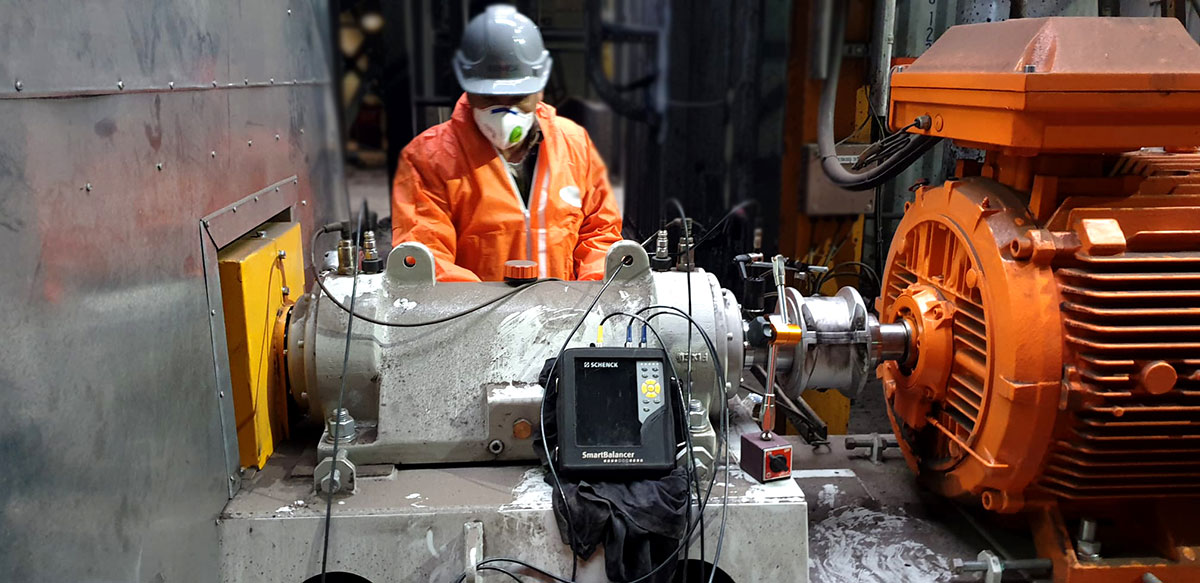Balancing Standards
“Industrial balancing should be completed to a recognised international standard to ensure balance quality and data consistency. The ISO publishes several standards which are the global benchmark for industrial balancing”.
The International Standards Organisation (ISO) publishes several standards which are the global benchmark for industrial balancing.
ISO 1940-1:2003 Mechanical vibration — Balance quality requirements for rotors in a constant (rigid) state. Part 1: Specification and verification of balance tolerances, gives specifications for rotors in a constant (rigid) state according to their machinery type and maximum service speed. These recommendations are based on worldwide experience.
The standard specifies Balance Tolerances, the necessary number of correction planes, and methods for verifying the residual unbalance. This standard is also intended to facilitate the relationship between the manufacturer and user of rotating machines, by stating acceptance criteria for the verification of residual unbalances.
The ISO standards contain detailed methods of calculating different static and couple unbalance tolerances that are dependent on the ratio of the part’s diameter to its length.
The ISO also specifies a Balance Quality Grade. This is a term used to define the limits of residual unbalance. It represents the product of the eccentricity (in millimetres) times the operating frequency (in Hertz).
The standard has issued guidelines with regard to a number of different kinds of devices. A balance quality grade of G6.3 is appropriate to most fans. A grade of less than G2.5 is usually only achievable on very special equipment.
At Precision Balancing we exceed these standards, and we offer G2.5 grade balancing in most cases.
Detailed consideration of errors with balancing and verification of residual unbalance are in ISO 1940-2.
ISO 1940-1:2003 does not cover rotors in a flexible state. The balance quality requirements for rotors in a flexible state are covered by ISO 11342.
Tabled below is an example of standard guidelines with regard to different devices (Indicative example only). For complete and accurate listings and details refer to the standard published by the International Organisation for Standardisation www.iso.org
| Balance Quality Grade | Magnitude | General examples |
| G100 | 100 | Complete engines for cars, trucks and locomotives |
| G40 | 40 | Car wheels, wheel rims, wheel sets Drive shafts Crankshaft/drives elastically mounted |
| G16 | 16 | Parts of crushing machines Parts of agricultural machinery Drive shafts, Cardan shafts, Propeller shafts Crankshaft/drives rigidly mounted |
| G6,3 | 6,3 | Fans Flywheels Pump impellers Paper machinery rolls, printing rollers Parts of process plant machines Marine main turbine gears Aircraft gas turbines General machinery parts Machine Tools Medium and large electric armatures (of electric motors having at least 80 mm shaft height and max speed of 950RPM) Small electric armatures Turbo Chargers |
| G2,5 | 2,5 | Gas and steam turbines Parts of Textile Machines Computer memory drives and discs Compressors Medium and large electric motor and generator armatures |
| G1 | 1 | Video, Audio and Tape recorder and phonograph drives |
| G0,4 | 0,4 | Spindles, discs, and armatures of precision systems Gyroscopes |
| This example is for general indicative demonstration purposes only and cannot be considered accurate or complete. For all standards purchases and information refer to the International Organization for Standardisation www.iso.org |

